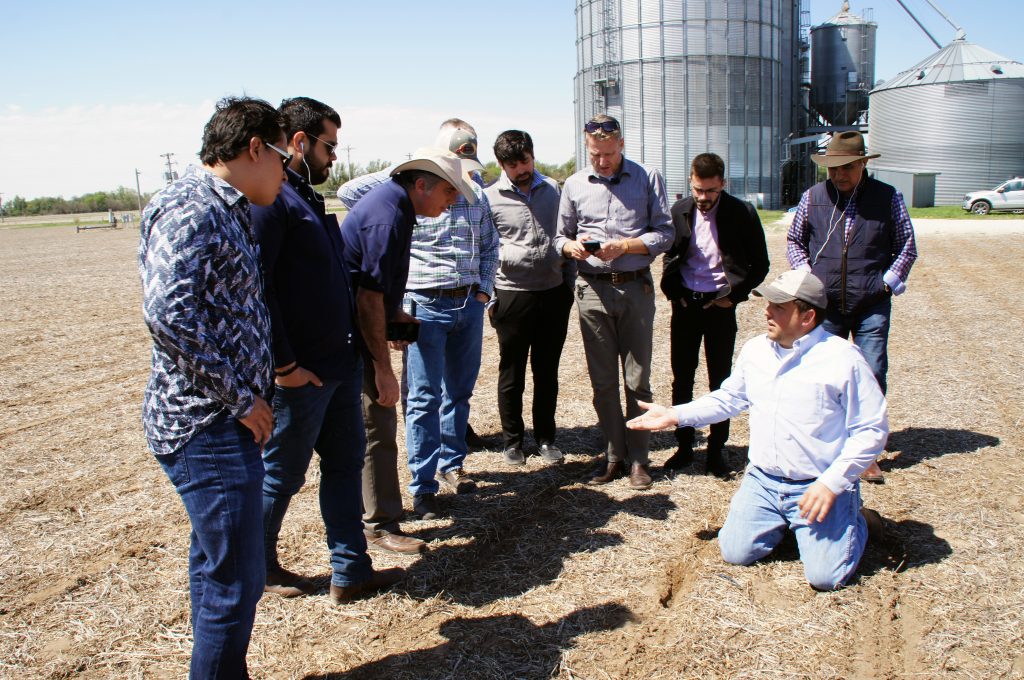A team of Mexican end-users visited cooperatives, elevators and farmers in Texas and Kansas late last month as part of back-and-forth trade missions organized by the U.S. Grains Council (USGC) to discuss opportunities for direct sales of U.S. sorghum into Mexico.
The 2019 team followed a direct sales mission to four different markets in northern Mexico, organized by the Council in July 2018, which connected U.S. cooperatives with end-users capable of buying volumes of U.S. sorghum via rail.
“By enabling a good trade environment through these visits, we create a condition where both buyer and seller establish solid business relationships,” said Javier Chavez, USGC marketing specialist in Mexico, who traveled with the team.

Team members were keen to learn the latest on sorghum pricing, market outlook and trade policy. High-volume exports to China had offset Mexican imports of U.S. sorghum in recent years. However, Mexico is a historic top export market for the product, and as Chinese purchases diminished, Mexico has returned to its role as a reliable buyer of U.S. sorghum. In the first six months of the 2018/2019 marketing year (September 2018-February 2019), Mexico imported nearly 211,000 tons (8.29 million bushels) of U.S. sorghum, up significantly year-over-year.
“These team members were importers who know the market and want information on the current situation with sorghum markets, including trade negotiations between the United States and China,” Chavez said.
Northern Mexico is a natural market for southern Texas, as trucks and rail regularly cross the border moving grain from one country to the other. The logistical advantages of geographic proximity and duty-free access under the North American Free Trade Agreement (NAFTA) make the United States an ideal option for sorghum imports for the Mexican swine and poultry sectors.
Through back-and-forth trade missions, the Council is helping Mexican sorghum buyers develop strategic relationships with U.S. suppliers so they are able to originate U.S. sorghum efficiently and effectively from U.S. cooperatives and elevators.

Members of this mission learned about sorghum pricing and innovative logistical strategies used by U.S. agribusinesses to procure, ship and store grain. The team visited facilities in southern Texas that will soon be able to flex sorghum shipments between rail, truck and vessels as well as cooperatives in northern Texas that send rail shipments of sorghum directly to Mexican end-users. The team also met with sorghum producers and elevators with shuttle-train loading capabilities in both states and conversed about shifting crop rotations and costs of production and transport.
“The team was very pleased and learned a lot,” Chavez said. “In the end, it takes end-users and producers working between the two countries to make contacts and learn how to best navigate the complicated trade situations with China and within Mexico domestically.”

Trade teams like this one are just one part of the Council’s efforts to provide timely marketing information on U.S. sorghum production, supply and demand to ensure Mexican buyers are positioned to buy U.S. sorghum when competitive in the Mexican market.
With additional funding from the U.S. Department of Agriculture’s (USDA’s) Agricultural Trade Promotion (ATP) program, the Council is further expanding efforts to diversify and create high-value markets for U.S. sorghum in Mexico and elsewhere in the world. This efforts are particularly important as the U.S. sorghum industry is dependent on the export market, consuming between 50 and 70 percent of production annually.
“The Council’s programming is allowing the sorghum industry to develop a more diversified and stable export channel for years to come,” Chavez said.
About The U.S. Grains Council
The U.S. Grains Council develops export markets for U.S. barley, corn, sorghum and related products including distiller’s dried grains with solubles (DDGS) and ethanol. With full-time presence in 28 locations, the Council operates programs in more than 50 countries and the European Union. The Council believes exports are vital to global economic development and to U.S. agriculture’s profitability. Detailed information about the Council and its programs is online at www.grains.org.

